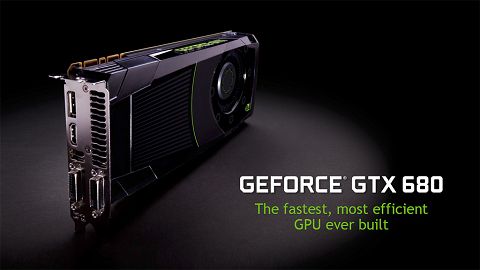NVIDIA Explains GTX 680 Voltage Control Restrictions to Legit Reviews
Internet forums have been buzzing with the news lately that the top versions of NVIDIA’s flagship GeForce GTX 680 have had an important overclocking feature removed: voltage control in either software or hardware. Specific examples include EVGA’s Classified missing the EVBot plug and MSI’s Lightning or Power Editions missing voltage control. This was due to NVIDIA asking their hardware partners to remove all forms of user voltage control.
As disappointing as this seems, NVIDIA have explained to us in an email the reason for this restriction which ultimately benefits enthusiasts. NVIDIA, of course, understand how their GPUs work at the deepest level and have determined that the GTX 680’s Kepler GK104 GPU will die an early death due to electromigration if the voltage is allowed to be increased beyond NVIDIA’s specified limits. It boils down to the card either lasting a normal lifetime of several years or going like a rocket and burning out quickly. NVIDIA doesn’t feel that this is worth it, as nice as it is to set benchmark records.

“We love to see our chips run faster and we understand that our customers want to squeeze as much performance as possible out of their GPUs. However there is a physical limit to the amount of voltage that can be applied to a GPU before the silicon begins to degrade through electromigration. Essentially, excessive voltages on transistors can over time “evaporate” the metal in a key spot destroying or degrading the performance of the chip. Unfortunately, since the process happens over time it’s not always immediately obvious when it’s happening. Overvoltaging above our max spec does exactly this. It raises the operating voltage beyond our rated max and can erode the GPU silicon over time.”
But what about Kepler’s GPU Boost, doesn’t this lead to premature wear on the GPU? No, it doesn’t. NVIDIA also explained that GPU Boost only increases the voltage and clock speed applied to the GPU within the safe, recommended limits, thus maximising GPU performance while maintaining its longevity.
“In contrast, GPU Boost always keeps the voltage below our max spec, even as it is raising and lowering the voltage dynamically. That way you get great performance and a guaranteed lifetime.
So our policy is pretty simple:
1. We encourage users to go have fun with our GPUs. They are completely guaranteed and will perform great within the predefined limits.
2. We also recommend that our board partners dont build in mechanisms that raise voltages beyond our max spec. We set it as high as possible within long term reliability limits.”
So, ultimately, preventing overvolting allows NVIDIA enthusiasts to enjoy their product for its full lifetime rather than having it die suddenly, or show strange anomalies over time before it dies, both highly frustrating and unwanted situations for enthusiasts.
From personal experience I can attest to this sort of thing happening with components that have been overclocked hard using overvolting, whether they be the GPU or CPU and it isn’t nice.
The reason we have a limit on max voltage is very simply to prevent damage to the GPU chips. At NVIDIA we know that our customers want to push their GPUs to the limit. We are all for it, and as a matter of fact NVIDIA has always prioritized support for hardware enthusiasts by providing tools to access hardware settings and by supporting our board partners in creating overclocked enthusiast products. Leading up to the GeForce GTX 680 release for example, we worked closely with developers of 3rd party overclocking utilities to make sure they fully supported GeForce GTX 680 and GPU Boost on the day of launch.

Comments are closed.